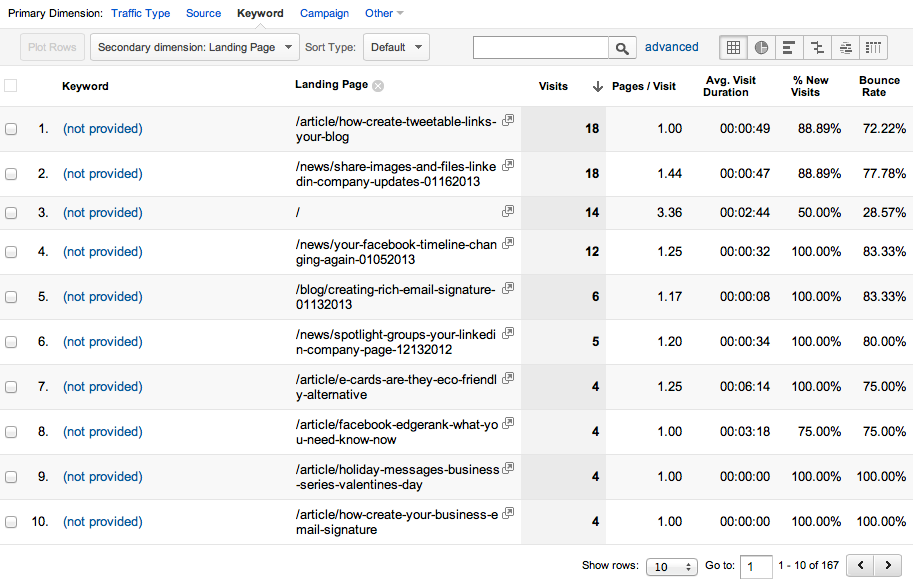Most of today’s analytics programs such as “Google Analytics” have a “pages” report that shows the amount of unique visitors to each page of your site. In most cases, the analytics should be able to show how each page fits into the paths that visitors have taken through the site, as well as which pages are associated with visits that end in “conversion” (a visit to the contact us page or completion of one of your online forms). Many analytics programs also provide insight into the amount of time visitors spent on each unique page of your site. This information can play a crucial role in analyzing site performance and planning future steps.
Page Visits Are an Immediate Barometer on Site Performance for Targeted Practice Areas
Each strategy we manage has a prioritized structure based upon the types of cases we’re trying to attract. Let’s take the example of a family law site. The “Divorce” page will be one of the primary destinations within the site, as will the “Child Custody and Visitation” page. Linking strategies, blogging and social media activities should be implemented with the practice area priorities in mind. These actions should be easily measurable over time by simply reviewing the number of unique visitors to each page. It is important to keep classic business cycles in mind (for example, divorce searches usually surge in late December through March, and then again in late August through October). Are your target pages increasing in the number of visits each month? What pages do visitors progress to after visiting priority targets, and how do they fit into the number of conversions for those visitors? If the average period of time per visitor is 39 seconds for a primary focus page, you have challenges to attend to. If the average time spent on the page is 1:30 or higher you’re heading toward the sweet spot.
Performance on Secondary Areas of Focus Should Be Impacted
Continuing with the family law example above, a hot area of targeting is “move aways” or “relocation” within child custody. One parent wishes to move out of state or relocate with the children. This page may not achieve as many visits as the primary page (child custody and visitation), however activities such as blogging and social media should increase the visibility and performance of this type of sub-priority page. Overall, as time progresses the performance of specific pages should reflect the attention you’ve given to the area of practice within your weekly and monthly strategy, and is an easy way to measure the performance of your website partner.
The “Pages” Report Is a Strong Indicator of Success and Underperformance
Each market is unique, and competition within your local internet space will impact the performance of each segment of your strategy, as well as your overall success. When you have pages that are performing well dump gasoline on the fire! This should take the form of expanding the conversation through sub-pages, as well as blogging and social media activity. When you have priority pages that are stagnant, or worse – declining, it is a signal to carefully review the structure and content of the page as well as its optimization. One must account for the relative “noise” within that targeted internet space, but the performance of specific pages can be a great source of intelligence when planning future activities and strategy.

